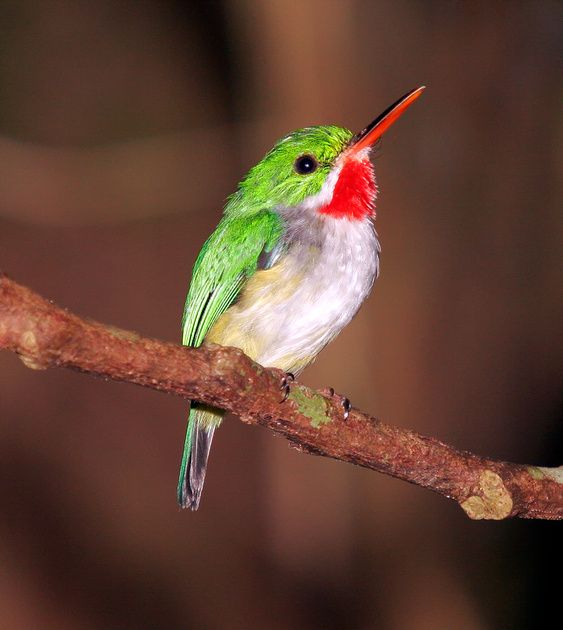The Carolina wren (Thryothorus ludovicianus) is a common species of wren that is a resident in the eastern half of the United States of America, the extreme south of Mexico, Canada, and the extreme northeast of Ontario. The Carolina Wren is a small but chunky bird with a round body and a long tail that it often cocks upward. The head is large with very little neck, and the distinctive bill marks it as a wren: long, slender, and downcurved. At 12.5 to 14 cm (4.9 to 5.5 in) long, with a 29 cm (11 in) wingspan and a weight of about 18 to 23 g (0.63 to 0.81 oz), the Carolina wren is a fairly large wren; the second largest in the United States species after the cactus wren. Their preferred habitat is in dense cover in forest, farm edges, and suburban areas. This wren is the state bird of South Carolina. Seven recognized subspecies occur across the range of these wrens and they differ slightly in song and appearance. Carolina wrens are mainly insectivores that eat near or on the ground. They eat spiders, beetles, grasshoppers, crickets, stick bugs, snails, ants and bees. They will also visit backyard bird feeders, including platform and suet feeders. Owls, small hawks, foxes and house cats take adult wrens. Raccoons, opossums, mink, weasels, mice, squirrels, woodpeckers and snakes raid wrens’ nests. Only male Carolina Wrens sing—a series of several quick, whistled notes, repeated a few times. The entire song usually lasts less than 2 seconds and the notes are usually described as three-parted, as in a repeated teakettle or germany. Each male has a repertoire of up to several dozen different song variations. He’ll sing one of these about 15 times before changing his tune. Carolina Wrens have a large repertoire of calls, including loud repeated rasping, chattering, and a rising and falling cheer. When they hear an intruder encroaching on their territory, male Carolina Wrens sometimes fly in short bursts, slamming hard into surfaces with an audible whirring of their wings. Wrens in Florida “drum” palmettos in this way, apparently in an attempt to get intruders to show themselves. Here is a link so you can listen to this bird too.
golden bird
I wish I saw this bird weee I lived, it looks super cute and golden 🥺🥺🥺


